[press release]
Australia Post pays tribute to marriage equality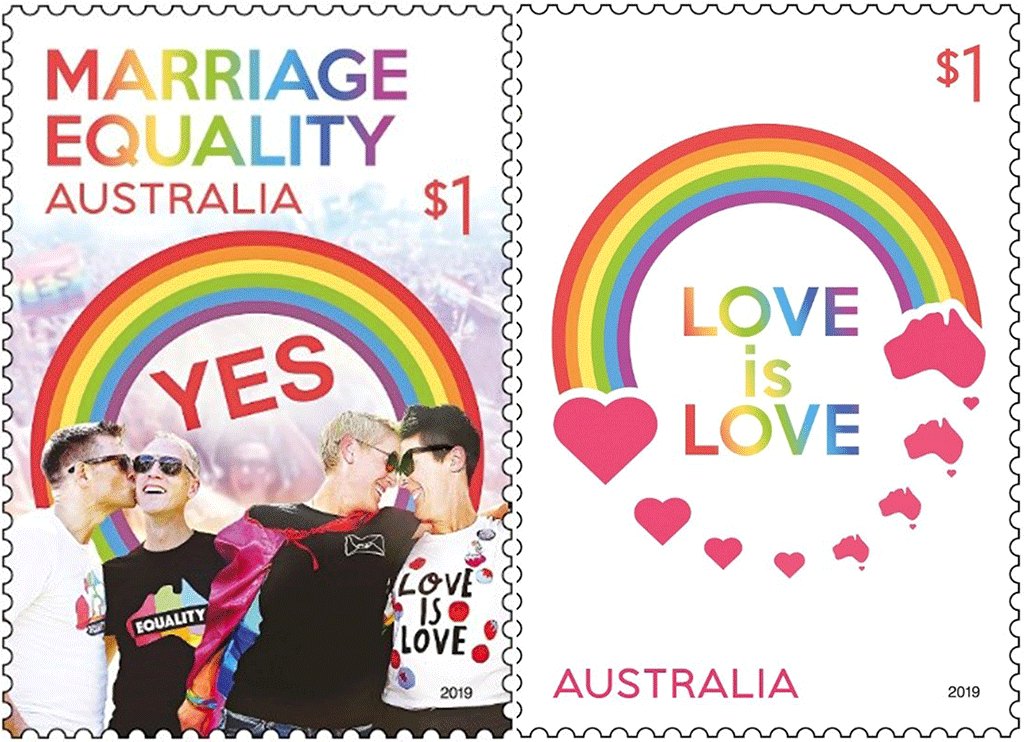
Two years after Australia legally recognised same-sex marriage Australia Post is releasing two commemorative stamps to mark the historic legislation.
On 7 December 2017, the Marriage Amendment (Definition and Religious Freedoms) Act 2017 passed Parliament and received royal assent from the Governor-General the following day.
 The legislation followed a voluntary postal vote with 61.6 per cent voting “Yes” to the question, “Should the law be changed to allow same-sex couples to marry?”.
The legislation followed a voluntary postal vote with 61.6 per cent voting “Yes” to the question, “Should the law be changed to allow same-sex couples to marry?”.
Australia Post Executive General Manager Gary Starr said the stamp release recognises a significant moment in our nation’s history.
“With thousands of Australian same-sex couples having tied the knot since the law came into effect on 9 December 2017, the stamp release recognises a change that has impacted many Australians.”
Designed by Sharon Rodziewicz of Australia Post Design Studio the two $1 domestic base rate stamps feature:
$1 Love is Love
This design features the rainbow, long a symbol of same-sex unity, and the catchcry “Love is Love”, which was used by proponents of same-sex marriage during the postal vote campaign.
$1 Yes
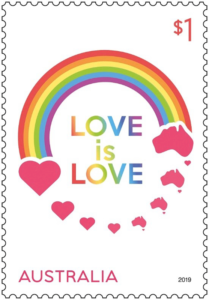 David Brine and Nick Higgins celebrate the postal vote result announcement on 15 November 2017 in Sydney and on the same day, Rebecca Davies and Paula Van Bruggen celebrate the result at the State Library, Melbourne.
David Brine and Nick Higgins celebrate the postal vote result announcement on 15 November 2017 in Sydney and on the same day, Rebecca Davies and Paula Van Bruggen celebrate the result at the State Library, Melbourne.
Products associated with this issue include first day cover, stamp pack, and a maxicard set. The commemorative stamp issue Celebrating Marriage Equality in Australia is available from 1 October 2019 at participating Post Offices, via mail order on 1800 331 794 and online at auspost.com.au/stamps, while stocks last.

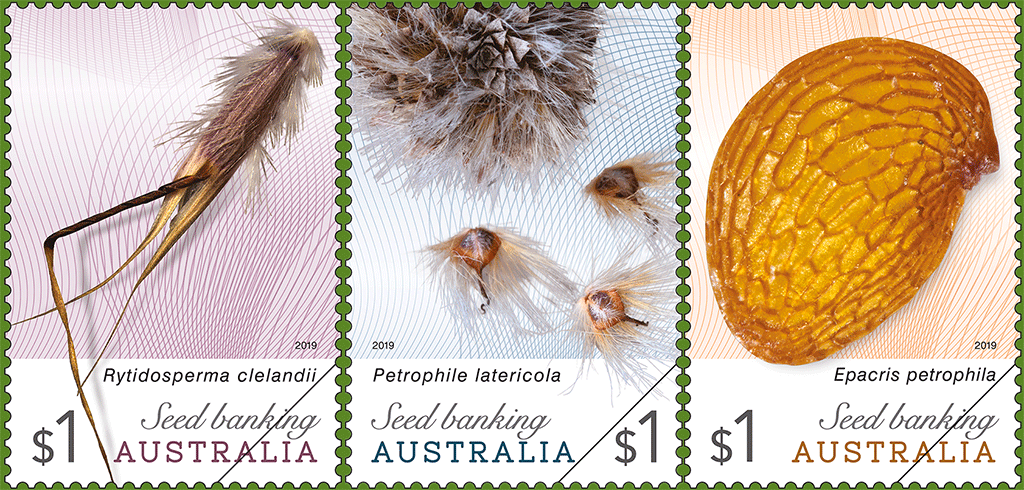
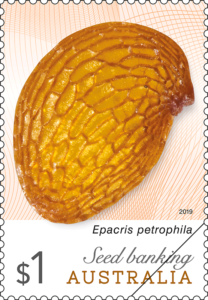 Australia’s several major seed banks are associated with state, territory and council-run botanic gardens that collect and conserve wild native flora.
Australia’s several major seed banks are associated with state, territory and council-run botanic gardens that collect and conserve wild native flora.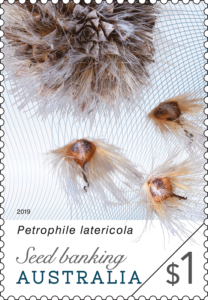 naked eye,” he said.
naked eye,” he said.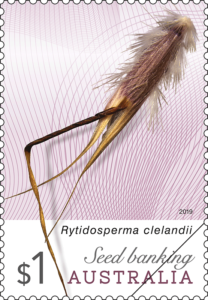 Petrophile latericola is listed as endangered and occurs naturally only in areas south-east of Busselton on Western Australia’s southern Swan Coastal Plain. Its shuttlecock-like seeds suggest they are dispersed by the wind. This seed image was captured by Andrew Crawford, Western Australian Seed Centre, Kensington.
Petrophile latericola is listed as endangered and occurs naturally only in areas south-east of Busselton on Western Australia’s southern Swan Coastal Plain. Its shuttlecock-like seeds suggest they are dispersed by the wind. This seed image was captured by Andrew Crawford, Western Australian Seed Centre, Kensington.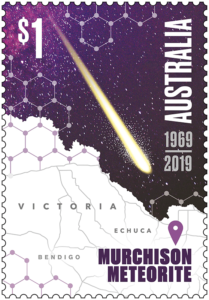 Australia Post is releasing a commemorative stamp to mark the 50th anniversary of the arrival of one of the world’s most scientifically acclaimed meteorites, the Murchison meteorite.
Australia Post is releasing a commemorative stamp to mark the 50th anniversary of the arrival of one of the world’s most scientifically acclaimed meteorites, the Murchison meteorite.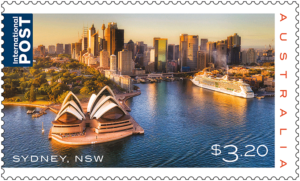 Australia Post is celebrating two of our beautiful cities, releasing two International Post stamps featuring Sydney and Perth. The stamp issue is the second in a series featuring Australian cities, with the first issue in 2018 featuring Adelaide, Brisbane, and Melbourne.
Australia Post is celebrating two of our beautiful cities, releasing two International Post stamps featuring Sydney and Perth. The stamp issue is the second in a series featuring Australian cities, with the first issue in 2018 featuring Adelaide, Brisbane, and Melbourne.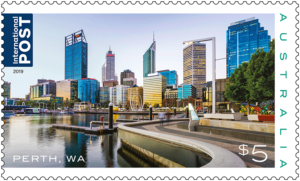 The largest state by area, Western Australia occupies approximately a third of the continent. Its capital city Perth, located on the beautiful Swan River and bounded by the Indian Ocean, was established in 1829 on the lands of the Whadjuk Noongar people. With around 2.3 million people, Perth is the fourth largest city in Australia. The stamp shows Elizabeth Quay, named in honour of Queen Elizabeth II during her Diamond Jubilee.
The largest state by area, Western Australia occupies approximately a third of the continent. Its capital city Perth, located on the beautiful Swan River and bounded by the Indian Ocean, was established in 1829 on the lands of the Whadjuk Noongar people. With around 2.3 million people, Perth is the fourth largest city in Australia. The stamp shows Elizabeth Quay, named in honour of Queen Elizabeth II during her Diamond Jubilee.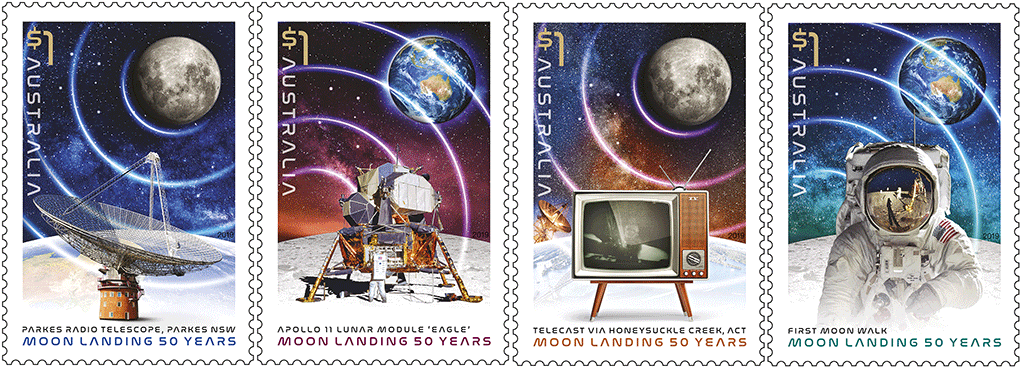
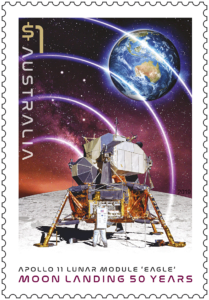 Australia Post Philatelic Manager Michael Zsolt said the stamp release celebrates the magnitude of the occasion but also Australia’s small but significant part in it.
Australia Post Philatelic Manager Michael Zsolt said the stamp release celebrates the magnitude of the occasion but also Australia’s small but significant part in it.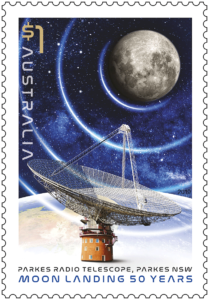 was used for descent to the lunar surface and served as a base while the astronauts were on the Moon.
was used for descent to the lunar surface and served as a base while the astronauts were on the Moon.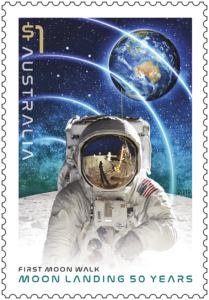 With around 600 million people watching on television, he climbed down the ladder and proclaimed: “That’s one small step for [a] man, one giant leap for mankind.”
With around 600 million people watching on television, he climbed down the ladder and proclaimed: “That’s one small step for [a] man, one giant leap for mankind.”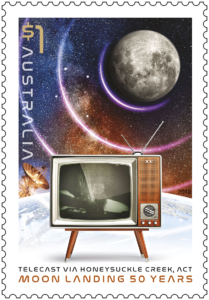 medallion cover, and four booklets of 10 x $1 self-adhesive stamps.
medallion cover, and four booklets of 10 x $1 self-adhesive stamps.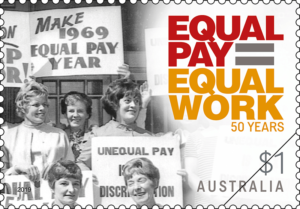 Australia Post is releasing a commemorative stamp to celebrate 50 years of the principle of equal pay for equal work in Australia.
Australia Post is releasing a commemorative stamp to celebrate 50 years of the principle of equal pay for equal work in Australia.
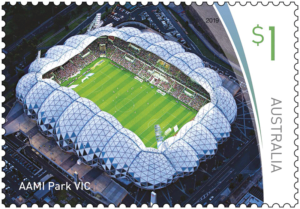 The award-winning AAMI Park was welcomed to Melbourne & Olympic Parks’ precinct in May 2010, giving Victoria its first world-class pitch for elite-level rugby league, rugby union and football codes. The 30,050-seat stadium is defined by its distinctive bio-frame design, the roof of which provides covered seating for most of a capacity crowd enjoying the spectacle on the 136 x 82 metre playing field below.
The award-winning AAMI Park was welcomed to Melbourne & Olympic Parks’ precinct in May 2010, giving Victoria its first world-class pitch for elite-level rugby league, rugby union and football codes. The 30,050-seat stadium is defined by its distinctive bio-frame design, the roof of which provides covered seating for most of a capacity crowd enjoying the spectacle on the 136 x 82 metre playing field below.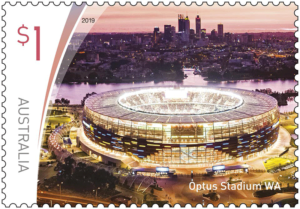 Optus Stadium was opened in Perth in January 2018, and in its first 12 months of operation attracted more than two million fans. The 60,000-seat stadium can host AFL, rugby union, rugby league, football and cricket, as well as large entertainment events. From fence to fence the pitch covers 177 x 141 metres, with 165 x 130 metres for the AFL field of play.
Optus Stadium was opened in Perth in January 2018, and in its first 12 months of operation attracted more than two million fans. The 60,000-seat stadium can host AFL, rugby union, rugby league, football and cricket, as well as large entertainment events. From fence to fence the pitch covers 177 x 141 metres, with 165 x 130 metres for the AFL field of play.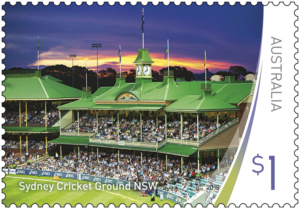 Located on the edge of the CBD, the Sydney Cricket Ground has a long and venerable history dating back to the mid-19th century. It hosted its first game of cricket in 1854, and has been home to major cricket matches since 1876. With a capacity of 48,000, in addition to hosting cricket in its various formats, it also regularly hosts AFL, rugby league and union, and football.
Located on the edge of the CBD, the Sydney Cricket Ground has a long and venerable history dating back to the mid-19th century. It hosted its first game of cricket in 1854, and has been home to major cricket matches since 1876. With a capacity of 48,000, in addition to hosting cricket in its various formats, it also regularly hosts AFL, rugby league and union, and football.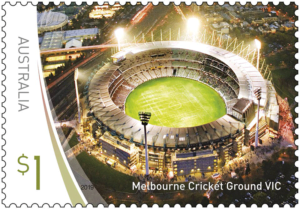 Melbourne Cricket Ground, or the MCG or ’G, as it is fondly known, is considered by many to be one of the premium stadia of the world. Built in 1853, it was the main venue for the first Olympic Games held in the Southern Hemisphere in 1956, a centrepiece for the 2006 Commonwealth Games and host to two cricket World Cups, in 1992 and 2015. Primarily a ground for AFL and cricket, with a capacity exceeding 100,000, it sits fondly in the heart of many Victorians and Australians alike.
Melbourne Cricket Ground, or the MCG or ’G, as it is fondly known, is considered by many to be one of the premium stadia of the world. Built in 1853, it was the main venue for the first Olympic Games held in the Southern Hemisphere in 1956, a centrepiece for the 2006 Commonwealth Games and host to two cricket World Cups, in 1992 and 2015. Primarily a ground for AFL and cricket, with a capacity exceeding 100,000, it sits fondly in the heart of many Victorians and Australians alike.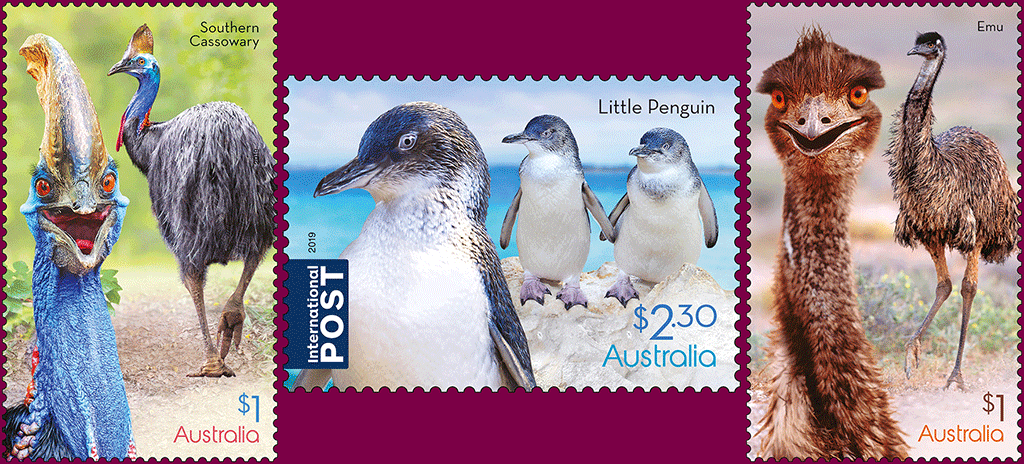
 $1 Emu (Dromaius novaehollandiae)
$1 Emu (Dromaius novaehollandiae) $1 Southern Cassowary (Casuarius casuarius)
$1 Southern Cassowary (Casuarius casuarius)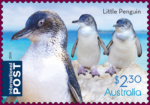 $2.30 Little Penguin (Eudyptula minor)
$2.30 Little Penguin (Eudyptula minor)
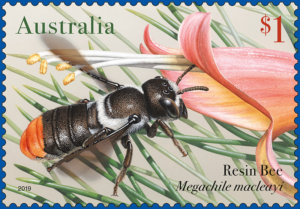 $1 Resin Bee (Megachile macleayi)
$1 Resin Bee (Megachile macleayi)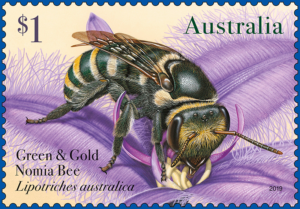 $1 Green and Gold Nomia Bee
$1 Green and Gold Nomia Bee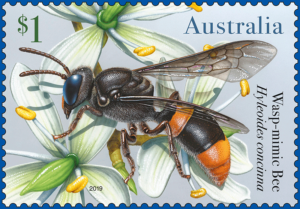 $1 Wasp-mimic Bee (Hyleoides concinna)
$1 Wasp-mimic Bee (Hyleoides concinna)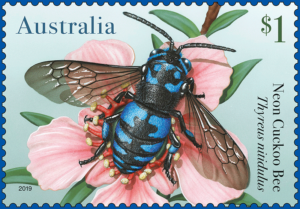 $1 Neon Cuckoo Bee (Thyreus nitidulus)
$1 Neon Cuckoo Bee (Thyreus nitidulus)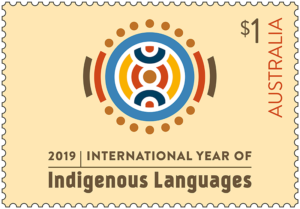 Australia Post is marking the International Year of Indigenous Languages 2019 with a commemorative stamp celebrating the more than 250 indigenous languages in our nation’s history.
Australia Post is marking the International Year of Indigenous Languages 2019 with a commemorative stamp celebrating the more than 250 indigenous languages in our nation’s history.

